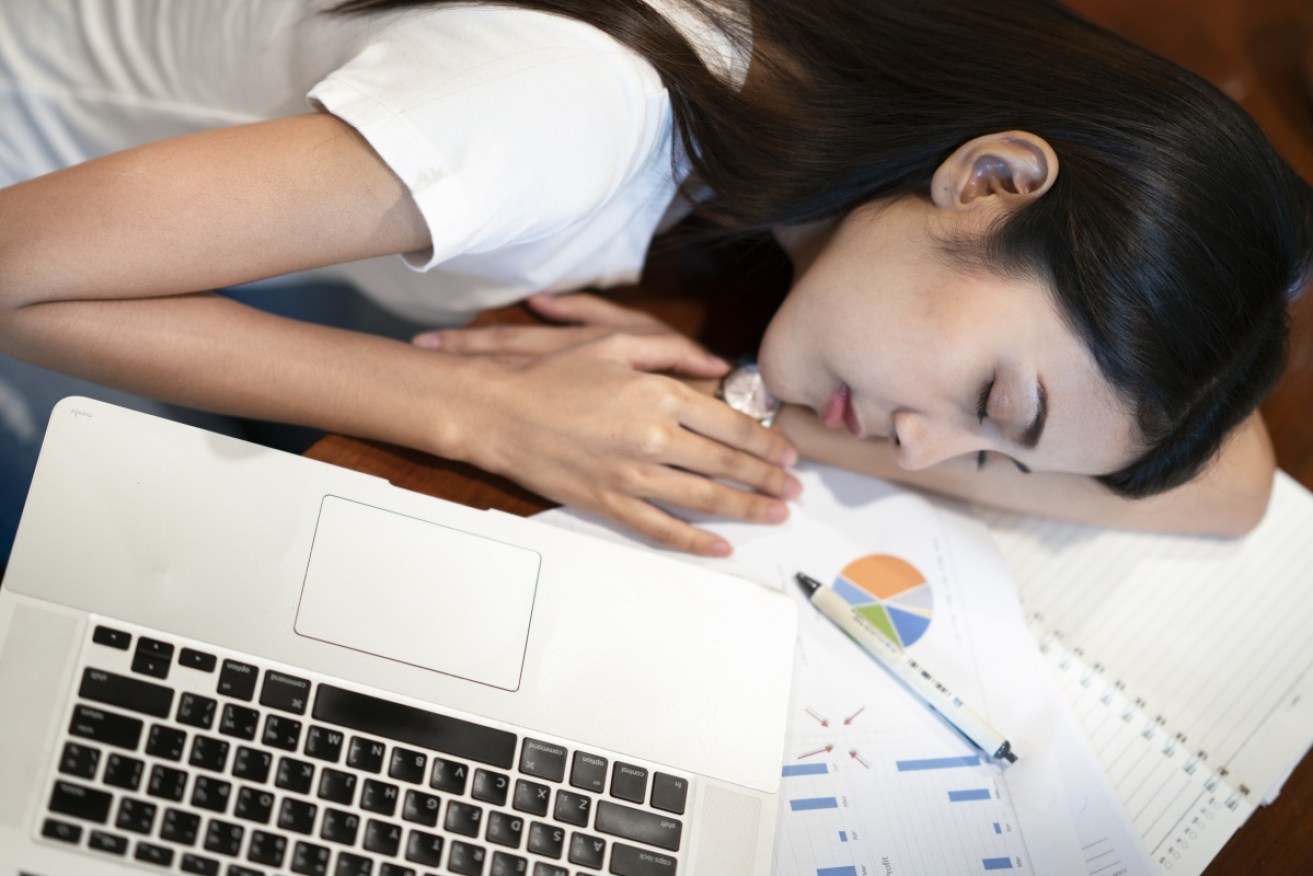Wake up! How to boost alertness and beat the midday slump


Tuckered out at the office? Try a shot of coffee followed by a 20-minute nap. Sounds crazy. But it works. Photo: Getty
It happens to most of us, at least some of the time: The work day is going along at a brisk pace, when suddenly the sparkle fades and your brain turns into a heavy liquid that slides down the front of your shirt.
Well, it feels that way. But why?
In part, it’s probably because humans were designed to split up their eight hours of sleep into two shifts, in order to support night-time hunting on the plain.
This is the basis of the afternoon siesta that some cultures use to maintain a valuable connection to the primal past. Or putting it another way, they’re sticking a biphasic sleep pattern that has sustained people even before they had a proper bed to sleep in.
So, either move to Spain and enjoy a siesta in the middle of your work day, or adopt some strategies to beat the noon-day crash and stay alert.
Lighten up
When reading up on how to establish a healthy sleep pattern, there’s usually a strong focus on the importance of creating a dark environment which serves as a signal that triggers the production of melatonin, the hormone.
You might have also read that to fully wake up and become alert you should expose your eyes and body to sunlight within an hour of leaving your bed. Why does this happen? It’s not just about the dropping of melatonin levels.
A new study sets out to provide new recommendations about light exposure and wakefulness. The researchers investigate the role of a light-sensitive protein that resides in our eyes called melanopsin.
This protein is particularly sensitive to short wavelength light on the blue spectrum. When we expose ourselves to sun in the morning, these light-sensitive proteins signal the brain that it’s time to sharpen up.
This is the same blue light that radiates from your smart phone, and explains why we should put the damn phone away well before we go to bed.
Of course, we get most of our blue light from the sun. And one of the implications of the new study is that we should get most of our light from the sun during the day.
Some workplaces are designed to provide plenty of natural light and light reflecting surfaces.
But some workplaces aren’t naturally lit. So what to do? Replacing yellow-light lamps with blue-light fluorescent bulbs will help.
But when a slump hits, take a break outside. Even better, go for a brisk walk or jog, and drink plenty of water. This will get the blood pumping to the brain, and those sluggish feelings should subside.
Try waking up to your favourite song
Getting a good and bright start to the day will go some way to avoiding or lessening a midday slump. It’s a bit like long jumping – the faster and stronger the run-up, the longer the distance you’ll fly.
We feel freshest when waking from light sleep. Waking from heavy sleep leaves you groggy and with a tendency to roll over and put a pillow over your head. This is formally known as ‘sleep inertia’.
We don’t have control over what phase of sleep we’ll be in when we wake.
But new research from RMIT in Melbourne suggests a pleasant upbeat melody, with a pulse of 100 to 120 beats per minute (as favoured on dance floors and on aerobics classes) can help lift you out of your foggy funk.
They suggest something like this:
In a follow-up study, the researchers evaluated “the effect of wake-up music on factors such as mental alertness”.
Using a custom-designed app, participants woke in their own bed “to different alarm sounds on their smart phone, then immediately perform a game-like task to assess their state of alertness”.
Similar to the test performed by astronauts on the International Space Station to monitor changes in sustained attention, “our participants were required to touch their mobile phone screen as quickly as possible when the colour of a shape changed”.
The results? “Melodic alarm sounds resulted in participants having faster and more accurate responses, compared with a control group who woke up using classic alarm sounds without melody,” the authors write.
See here and here for more about the studies.
The coffee nap
On the face of it, the coffee nap makes no sense. It goes like this:
- You’re feeling sleepy at work with hours to go before knock-off. Your brain has been chewing through sugar for energy. The depletion of sugar leads to an accumulation of adenosine which makes you sleepy, as a strategy to conserve energy.
- Drink a cup of coffee quickly. Throw it down like medicine.
- Settle in for a 20-minute nap. While you’re sleeping, the levels of adenosine will drop. Meanwhile, about 20 minutes is what it takes for the coffee to work its way through your gut and into your brain.
- All going well, you should wake up, ready to rock.








